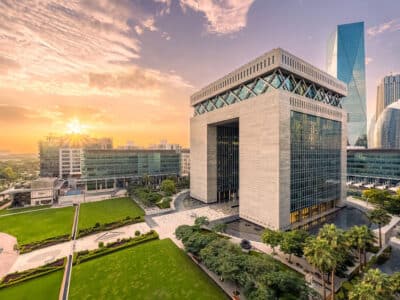The central banks of the UAE, Bahrain, Saudi Arabia, Kuwait and Qatar have raised their benchmark borrowing rates after the US Federal Reserve’s approval of an interest rate hike, which soared to its highest level in 22 years.
Following a temporary pause in its tightening cycle in June, the Federal Reserve decided to raise the policy rate by 25 basis points, marking the 11th increase since March last year. The Fed’s latest move signifies the highest rate hike since 2001, as the central bank aims to curtail inflation and bring it down to its 2 percent target range.
The urgency to address inflationary pressures comes in the wake of prices reaching their highest levels in June 2022, a peak not seen in four decades.
The Fed’s latest increase raises the federal funds rate to 5.25-5.5 percent.
GCC central banks follow Fed’s interest rates
Most central banks in the GCC align with the Fed’s policy rate changes due to their currencies being pegged to the US dollar, except for Kuwait which links its Dinar to a currency basket.
The Saudi Central Bank increased its repo rate to 6 percent, marking a 0.25 percentage point increase, and its reverse repo rate to 5.5 percent.
Preliminary forecasts indicate a 2.1 percent inflation rate in Saudi Arabia this year, with consumer prices declining from 3.4 percent in January to 2.7 percent last month, as per official data.
The UAE Central Bank raised its overnight deposit facility rate to 5.4 percent and maintained the short-term liquidity borrowing rate at 50 bps above the base rate.
The base rate, tied to the Fed’s interest on reserve balances, reflects the Central Bank’s monetary policy stance and sets an interest rate floor for overnight money market rates.
US inflation slows
Earlier this month, Goldman Sachs’ chief economist, Jan Heatzius, put the odds of a US recession over the next 12 months at 20 percent, down from a previous estimate of 25 percent.
“The main reason for our cut is that the recent data have reinforced our confidence that bringing inflation down to an acceptable level will not require a recession,” he wrote at the time.
The Federal Reserve’s aggressive rate hikes for more than a year raised fears that the central bank would sink the economy amid its fight to bring inflation down to its 2 percent target.
But the consumer price index showed inflation had cooled to a 3 percent pace in June, down from last year’s peak of 9 percent.
US inflation dipped to a two-year low last month, indicating price increases are cooling amid the Fed’s rate hiking regime.
Data from the country’s Labour Department showed the Consumer Price Index grew at an annual rate of 3 percent – the smallest since March 2021.








